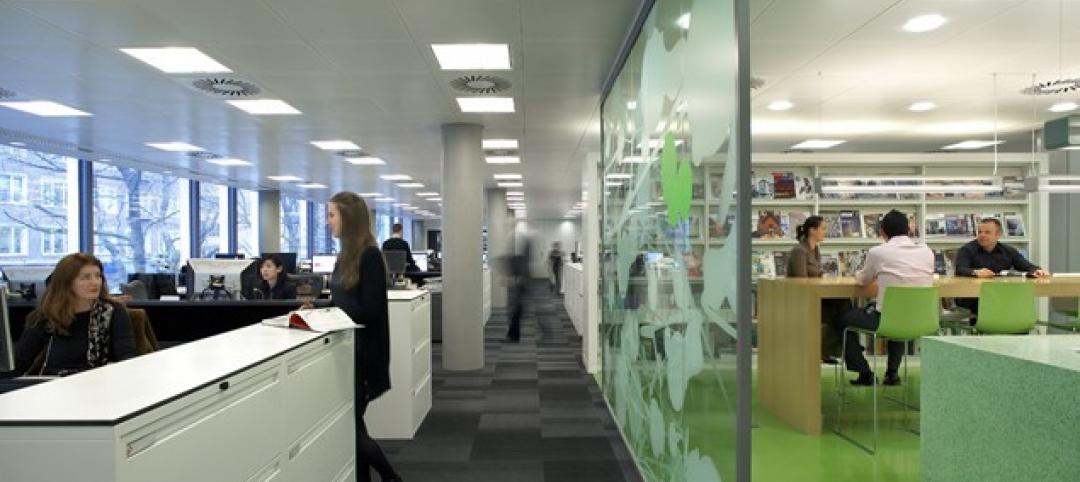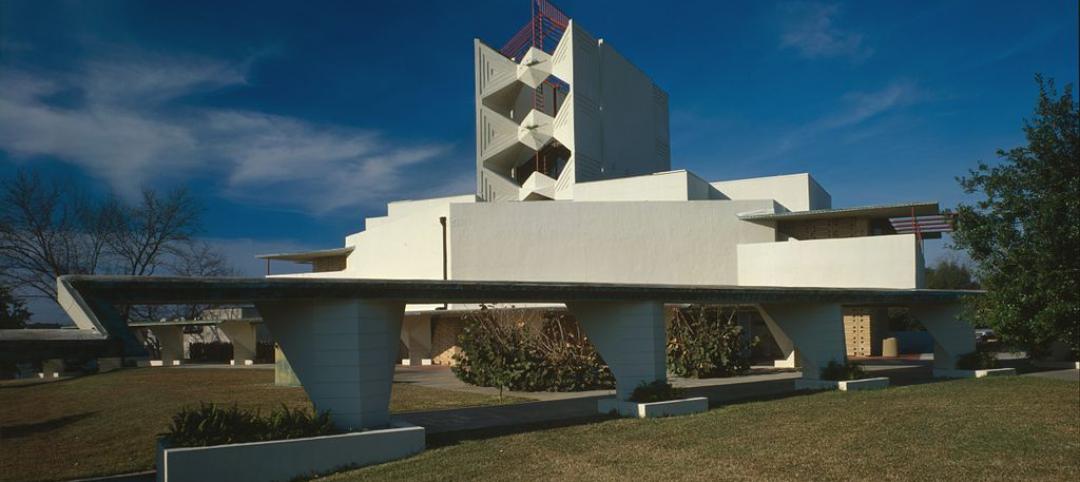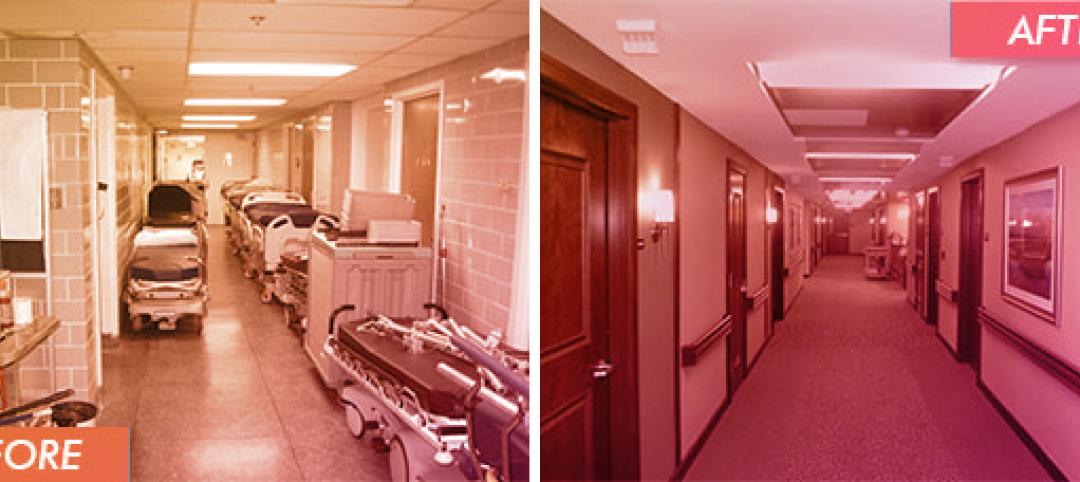Low-emissivity (low-e) glasses are critical to making today’s buildings brighter, more energy-efficient and more sustainable. By controlling solar heat gain and promoting daylighting, they help buildings use less energy for temperature control and lighting, while adding the human benefits associated with outdoor views and more pleasant working and living environments.
Here are five tips to help architects, engineers, and contractors understand and explain the differences among low-e glasses and their impact on building performance:
1. E = Emissivity. Emissivity refers to the relative ability of a material’s surface to radiate energy. Low-e glass has a microscopically thin coating that lowers the emissivity of the glass surface and is engineered to transmit energy from the visible light portion of the solar spectrum (between 380 and 780 nanometers), while reflecting energy from ultraviolet light (310 to 380 nanometers), which causes fading, and infrared light (above 780 nanometers), which makes buildings warmer.
2. Think of a thermos. A thermos works by using a silver lining to continuously reflect and maintain the temperature of the drink it contains. Low-e glasses function according to the same principal, using multiple layers of silver or other low-emissivity materials in the coating to keep heat inside a building or prevent it from entering. Similarly, thermoses and insulating glass units (IGUs) are both designed with air spaces that provide a layer of insulation between the inside and outside.
3. More slivers of silver. Low-e coatings incorporate multiple layers of silver (or other low- emissivity materials) to control the transmission and reflection of heat and light. Recent technical advances now enable glass manufacturers to deposit up to three layers of silver on the glass substrate, which has enhanced the solar control capability of low-e glasses without diminishing their ability to transmit light.
4. Passive for insulation. Passive low-e glasses are usually made using the pyrolitic process, which means the coating is applied while the molten glass ribbon is still on the float line. This produces a “hard” coat that is fused to the glass surface and highly durable, but which has a higher emissivity that a solar-control low-e glass. Passive low-e glasses have decent insulating capabilities, but because of the limitations of metal deposition on the float line, they permit more solar infrared energy (heat) to pass through their coatings and become trapped inside the building. Consequently, passive low-e glasses are often the best choice for cold, heating-dominated climates.
5. Solar control to reduce heat gain. Coatings for solar control, low-e glasses are applied to pre-cut sheets of glass in a vacuum chamber at room temperature. This gives glass manufacturers the ability to deposit more sophisticated coatings (with multiple layers of silver) on the glass substrate, which improves solar control of the infrared (heat) portion of the solar spectrum without substantially diminishing the transmittance of visible light. These coatings are the best choice for hot, cooling-dominated (and moderate) climates. The lower emissivity of solar control low-e glasses also provides better insulating values to maintain the interior temperatures.
To learn more about low-e glass and other topics related to designing, specifying and building with glass, visit the PPG Glass Education Center at http://educationcenter.ppg.
Related Stories
| Sep 10, 2014
Must See: Shape-shifting architecture that responds to heat
Students in Barcelona have created a composite material using shape memory polymers that can deform and return to their original state when activated by cues like heat, humidity, and light.
| Sep 10, 2014
Lessons for the shore: Bolstering resilience of the built environment
Nearly 32 million people, or 28% of the East Coast's population, live in areas lying within a mile of a shore line. The good news is that municipalities are starting to take action, writes Sasaki Associates.
| Sep 9, 2014
Using Facebook to transform workplace design
As part of our ongoing studies of how building design influences human behavior in today’s social media-driven world, HOK’s workplace strategists had an idea: Leverage the power of social media to collect data about how people feel about their workplaces and the type of spaces they need to succeed.
| Sep 9, 2014
Ranked: Top religious sector AEC firms [2014 Giants 300 Report]
Brasfield & Gorrie, Gensler, and Jacobs top BD+C's rankings of the nation's largest religious sector design and construction firms, as reported in the 2014 Giants 300 Report.
| Sep 9, 2014
Take a look at the hardhat of the future
A Los Angeles-based startup added augmented reality technology to a hardhat, creating a smart helmet.
| Sep 9, 2014
Frank Lloyd Wright's Annie Pfeiffer Chapel brought back to life using 3D printing
Restoration of the Frank Lloyd Wright-designed chapel was made possible (and affordable) thanks to 3D printing.
| Sep 8, 2014
First Look: Foster + Partners, Fernando Romero win competition for Mexico City's newest international airport
Designed to be the world’s most sustainable airport, the plan uses a single, compact terminal scheme in lieu of a cluster of buildings, offering shorter walking distances and fewer level changes, and eliminating the need for trains and tunnels.
| Sep 8, 2014
Trimble acquires Gehry Technologies, aims to create tools for linking office and job site
Trimble and Frank Gehry announced that they have entered into a strategic alliance to collaborate to transform the construction industry by further connecting the office to on-site construction technologies. As part of the alliance, Trimble has acquired Gehry Technologies.
| Sep 7, 2014
Ranked: Top state government sector AEC firms [2014 Giants 300 Report]
PCL Construction, Stantec, and AECOM head BD+C's rankings of the nation's largest state government design and construction firms, as reported in the 2014 Giants 300 Report.
| Sep 7, 2014
Hybrid healthcare: Revamping inefficient inpatient units to revenue-producing outpatient care
It's happening at community hospitals all over America: leadership teams are looking for ways to maintain margins by managing underutilized and non-revenue producing space. GS&P's David Magner explores nontraditional healthcare models.

















